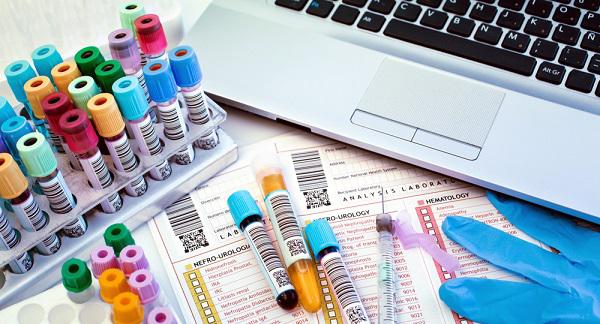
What is a lactate dehydrogenase (LDH) isoenzymes test?
This test measures the level of the different lactate dehydrogenase (LDH) isoenzymes in the blood. LDH, also known as lactic acid, is a type of protein, known as an enzyme. LDH plays an important role in making your body's energy. It is found in almost all the body's tissues.
There are five types of LDH. They are known as isoenzymes. The five isoenzymes are found in different amounts in tissues throughout the body.
- LDH-1: found in heart and red blood cells
- LDH-2: found in white blood cells. It is also found in heart and red blood cells, but in lesser amounts than LDH-1.
- LDH-3: found in lung tissue
- LDH-4: found in white blood cells, kidney and pancreas cells, and lymph nodes
- LDH-5: found in the liver and muscles of skeleton
When tissues are damaged or diseased, they release LDH isoenzymes into the bloodstream. The type of LDH isoenzyme released depends on which tissues are damaged. This test can help your provider find out the location and cause of your tissue damage.
Other names: LD isoenzyme, lactic dehydrogenase isoenzyme
What is it used for?
An LDH isoenzymes test is used to find out the location, type, and severity of tissue damage. It can help diagnose a number of different conditions including:
Why do I need an LDH isoenzymes test?
You may need this test if your health care provider suspects that you have tissue damage based on your symptoms and/or other tests. An LDH isoenzymes test is often done as a follow-up to a lactate dehydrogenase (LDH) test. An LDH test also measures LDH levels, but it doesn't provide information on the location or type of tissue damage.
What happens during an LDH isoenzymes test?
A health care professional will take a blood sample from a vein in your arm, using a small needle. After the needle is inserted, a small amount of blood will be collected into a test tube or vial. You may feel a little sting when the needle goes in or out. This usually takes less than five minutes.
Will I need to do anything to prepare for the test?
You don't need any special preparations for an LDH isoenzymes test.
Are there any risks to the test?
There is very little risk to having a blood test. You may have slight pain or bruising at the spot where the needle was put in, but most symptoms go away quickly.
What do the results mean?
If your results showed that levels of one or more LDH isoenzymes were not normal, it probably means you have some kind of tissue disease or damage. The type of disease or damage will depend on which LDH isoenzymes had abnormal levels. Disorders that cause abnormal LDH levels include:
If you have questions about your results, talk to your health care provider.
This health news has been brought to you by the publishers of Health Reviews, Tips and News Website. Visit today for great health tips and reviews.



No comments
Post a Comment